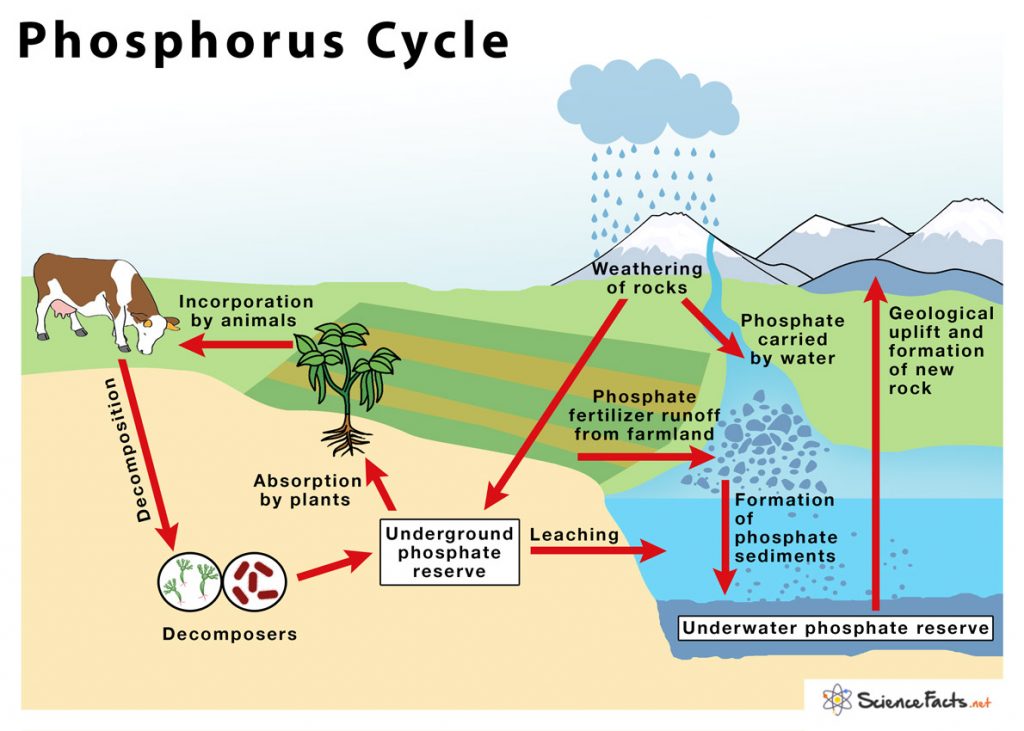Over a long period, phosphates found in the sedimentary rocks as PO43-, are leached out of the disintegrated rocks from its various environmental sources in the form of inorganic phosphate ions. This process called weathering acts as the first key step of the phosphorus cycle. Other than weathering, volcanic ash, aerosols, and mineral dust also serve as other significant phosphate sources. 2) Mineralization by plants Plants absorb organic phosphorus present in soil and underground water and convert them to inorganic forms for utilization is called mineralization. The aquatic plants absorb inorganic phosphorus from lower layers of water bodies due to their low solubility in water. 3) Assimilation by animals Herbivorous and carnivorous animals, including humans, absorb phosphorus when they consume these plants for their food, a process known as assimilation. Besides, animals obtain phosphorus directly from drinking water. 4) Decomposition by microorganisms Microorganisms such as bacteria and fungi decompose organic phosphates back into the inorganic form, which is then returned to the soil and water bodies. Phosphorus-containing compounds may also be carried in the surface runoff to rivers, lakes, and oceans to form sediments. 5) Geological uplift by tectonic movements Over long periods, sedimentary rocks containing phosphorus may be moved from the ocean to the land by a process called geological uplift. The phosphorus thus deposited as sediments are ultimately released back into the environment through the process of weathering, thus completing the cycle.
Using of phosphate-containing fertilizersCutting down of tropical rain forestsSpilling of phosphate during transportationLeaching of phosphorus from households and industries into water bodies
